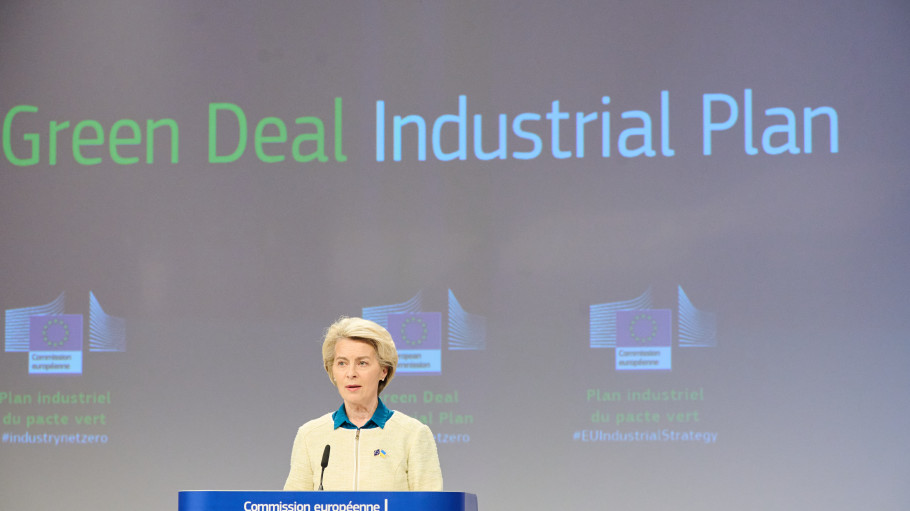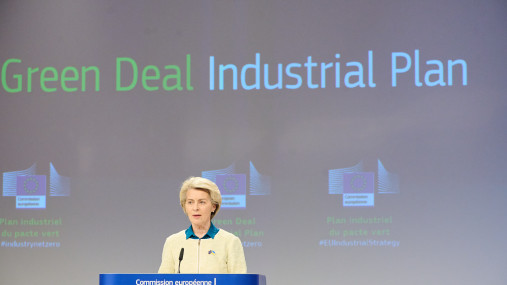
Press releases » Green steel as key driver to Net-zero industry: the EU must adopt and implement a value chain approach if clean tech investment is to stay in Europe, says EUROFER
Green steel as key driver to Net-zero industry: the EU must adopt and implement a value chain approach if clean tech investment is to stay in Europe, says EUROFER
Downloads and links
Recent updates

Brussels, 01 February 2023 – The foundations of the Net-zero Age are made of steel, from wind turbines to electric vehicles. Steel is essential to make these clean tech value chains circular and carbon neutral. This is why the new EU Industrial Plan must have an overall vision, while its implementation will be crucial to adopt a value chain approach focusing on all key upstream and downstream sectors that are indispensable for reaching the EU’s climate and circular economy objectives. Competitiveness will be key to attract clean investment in the EU as the Inflation Reduction Act will do in the U.S., says the European Steel Association following the Commission Communication on the Green Deal Industrial Plan.
“The IRA shows that it is possible to have a proactive, structural, carbon-neutral industrial policy centred on incentives and industrial competitiveness, rather than relying primarily on obligations and targets complemented only by piecemeal, uncertain support”, said Axel Eggert, Director General of the European Steel Association (EUROFER). “We estimate that the IRA, combined with additional resources from the U.S. Department of Energy, can provide at least $85 billion of funding available for green steel production and upstream decarbonised energy”, he added.
According to EUROFER’s projections, the U.S. measures will result in a significant reduction of the cost of green hydrogen by about $3 and up to $4 per kilogramme of hydrogen. This means that the IRA subsidies risk widening the current gap in steel cost production between the EU and the US up to 60%.
The European steel industry can be the EU’s industrial front-runner in deep CO2 emission reduction cuts already in the next few years, with 60 industrial-scale projects ready to be implemented before 2030. However, these clean technologies require significant capital investment of approximately €31 billion, for which decisions have to be taken now, and access to abundant, affordable low-carbon energy. Total operational expenditure is estimated at €53 billion (pre-crisis forecast). To become viable, low-CO2 steel needs a level-playing field with global competitors and demand-side measures to boost its uptake in the market.
The Green Deal Industrial Plan must provide a business case for investment in Europe comparable to the U.S. one. Otherwise, green steel projects as well as other clean tech investments risk not to happen in Europe.
“We call on the Commission to work out, jointly with industry, a concrete plan that secures access to timely, abundant and affordable fossil-free energy and hydrogen for steel and other sectors which are ready to speed up decarbonisation, as well as access to Carbon Capture, Utilisation and Storage (CCUS), together with more certainty for and swifter access to funding and permitting of projects. A structured, comprehensive and long-term EU proposal on industrial policy should aim at matching the level of incentives provided by our international competitors. Implementation will be key”, stressed Mr. Eggert.
“This is why we should consider a re-assessment of the EU policies, based on the principles of competitiveness and level-playing field, with an open and target-focused discussion between policymakers and the industry. They can be mainstreamed and actively promoted in all relevant policy areas for industry, as the U.S. has already done with the IRA”, he concluded.
Photo credits: European Union, 2023
Contact
Lucia Sali, Spokesperson and Head of Communications, +32 2 738 79 35, (l.sali@eurofer.eu)
About the European Steel Association (EUROFER)
EUROFER AISBL is located in Brussels and was founded in 1976. It represents the entirety of steel production in the European Union. EUROFER members are steel companies and national steel federations throughout the EU. The major steel companies and national steel federation of Turkey and the United Kingdom are associate members.
The European Steel Association is recorded in the EU transparency register: 93038071152-83.
About the European steel industry
The European steel industry is a world leader in innovation and environmental sustainability. It has a turnover of around €125 billion and directly employs around 310,000 highly-skilled people, producing on average 153 million tonnes of steel per year. More than 500 steel production sites across 22 EU Member States provide direct and indirect employment to millions more European citizens. Closely integrated with Europe’s manufacturing and construction industries, steel is the backbone for development, growth and employment in Europe.
Steel is the most versatile industrial material in the world. The thousands of different grades and types of steel developed by the industry make the modern world possible. Steel is 100% recyclable and therefore is a fundamental part of the circular economy. As a basic engineering material, steel is also an essential factor in the development and deployment of innovative, CO2-mitigating technologies, improving resource efficiency and fostering sustainable development in Europe.

Brussels, 22 March 2024 – The future of a strong and resilient EU can only be forged with steel made in Europe. Europe-made low-carbon steel has a strategic role as it enables a net-zero economy, but today it faces strong headwinds from high energy prices, unfair competition, global overcapacity and growing unilateral carbon costs. The year 2023 has recorded the lowest European crude steel production levels ever, with a number of idled plants and dire impact on workers. Ensuring the enabling conditions for the short-term viability and the decarbonisation of the steel sector urgently needs to be at the top of the EU agenda. This is the message delivered by the European Steel Association together with a number of high-level representatives of the sector on the occasion of the Clean Transition Dialogue on Steel in the presence of the Executive Vice Presidents of the European Commission, Maroš Šefčovič and Margrethe Vestager.
Uses, limits, and realistic potentials of demand-side response from the European steel industry along with a broad set of framework recommendations for an EU policy
Antwerp, 20 February 2024 – Today 73 industry leaders spanning almost 20 industrial sectors presented ‘The Antwerp Declaration for a European Industrial Deal’ to Belgian Prime Minister, Alexander De Croo and Commission President, Ursula von der Leyen. The declaration underlines the commitment of industry to Europe and its transformation and outlines urgent industry needs to make Europe competitive, resilient, and sustainable in the face of dire economic conditions.